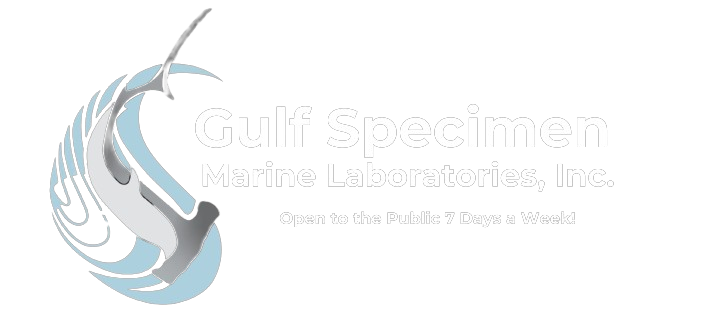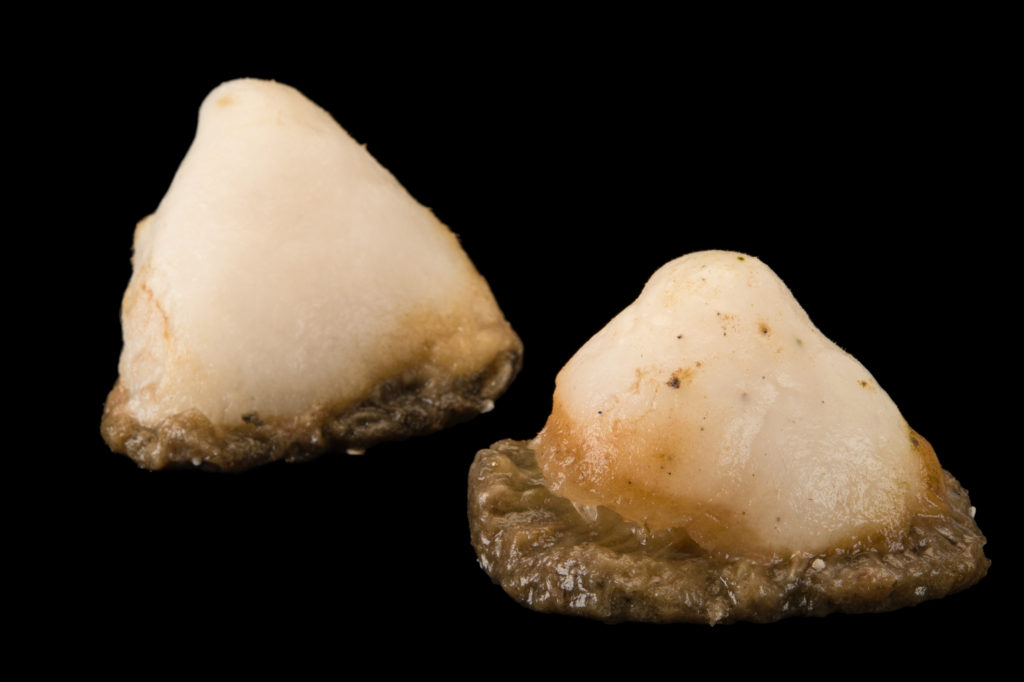Shop
This is where you can browse products in this store.
Since there are no fresh water echinoderms, this is one of the most popular phylogenetic assortments, with collections of writhing brittlestars lashing their snaky arms, bristling sea urchins and burrowing sand dollars. Sea cucumbers, shaped as their name implies, tunnel through the sediments like earthworms taking up nutrients and starfish creep up the aquarium glass, wrapping their arms around tunicates, or chopped clams. Sand stars emerge from sand and “speed” along the bottom, on raised tubed feet when a bit of food is dropped in the tank. These assortments usually include two or three of every listing, and sometimes there are surprises such as sea biscuits and other echinoderms.
$135.00 – $270.00

Included are amphipods, isopods, barnacles, crabs, shrimp, hermit crabs, and horseshoe crabs.
$135.00 – $270.00
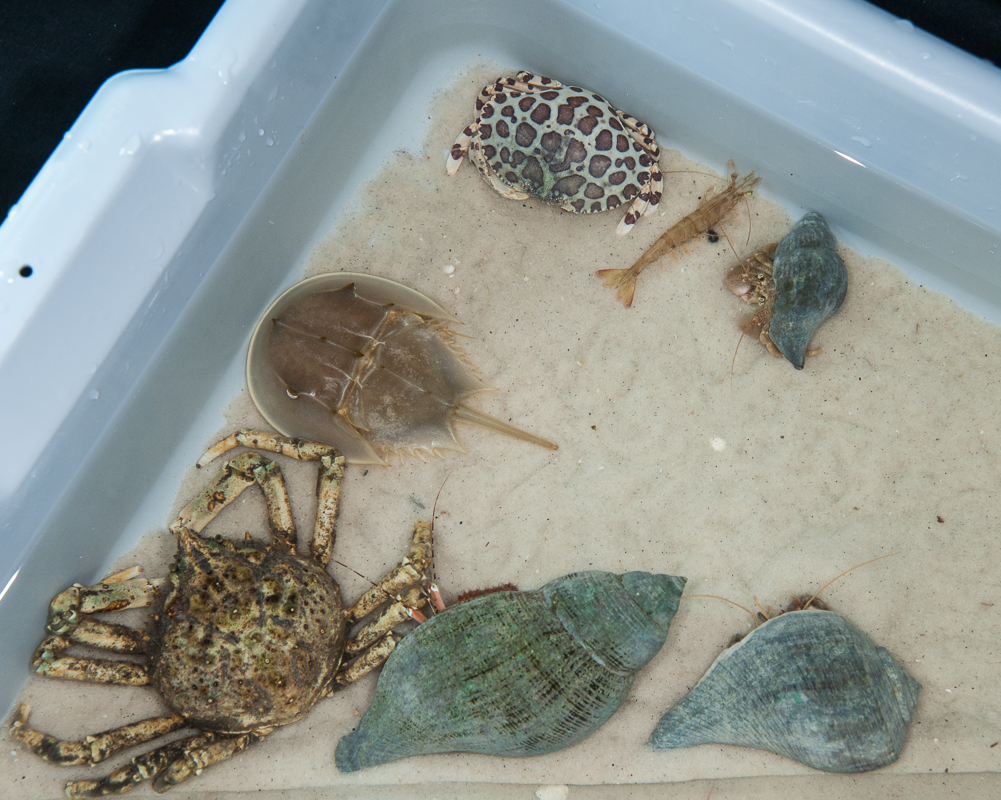
Includes colorful anemones from our tanks, hydroid, corals, gorgonians, sea pansies and if scyphozoan jellyfish are pulsating in our bay, they are included along with shimmering examples of the phylum Ctenophora.
$135.00 – $270.00
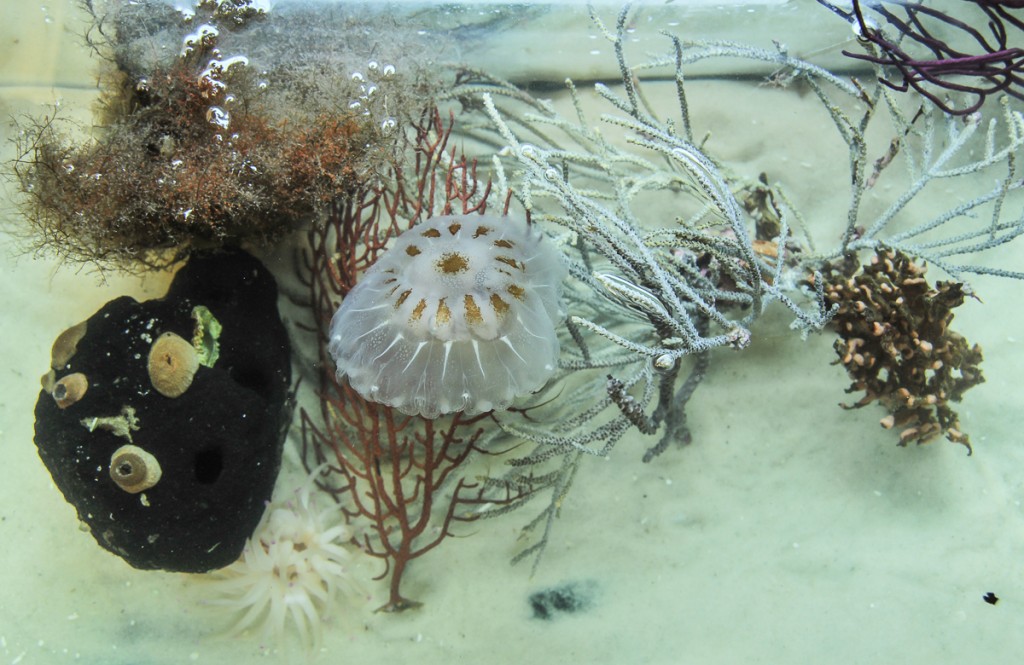
Includes an array of brightly colored sponges that can range from different shades of green, blue, pink or yellow. Species may include red beard, yellow ball, devil’s finger and crumb of bread sponge.
$135.00 – $270.00
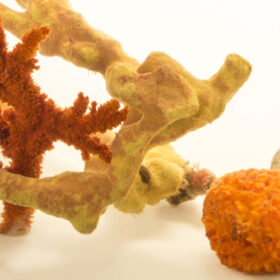
- Included are chitons, clams, mussels, whelks, snails, and nudibranchs. When abundant, scaphopods and/or frilled sea hares may be included.
$135.00 – $270.00
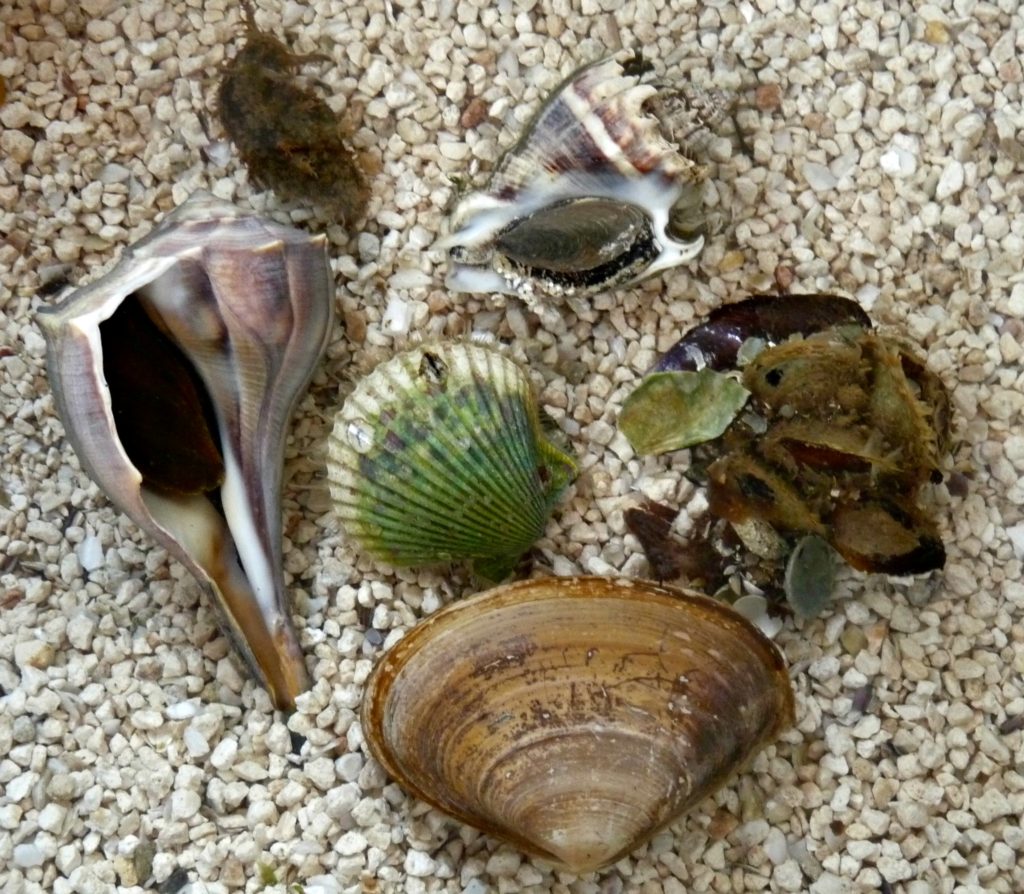
Create your own botanical gardens with our collection of semi-tropical macroscopic benthic marine algae. Phyla represented include Chlorophyta, Rhodophyta, Phaeophyta, and Cyanophyta.
$99.00 – $129.50
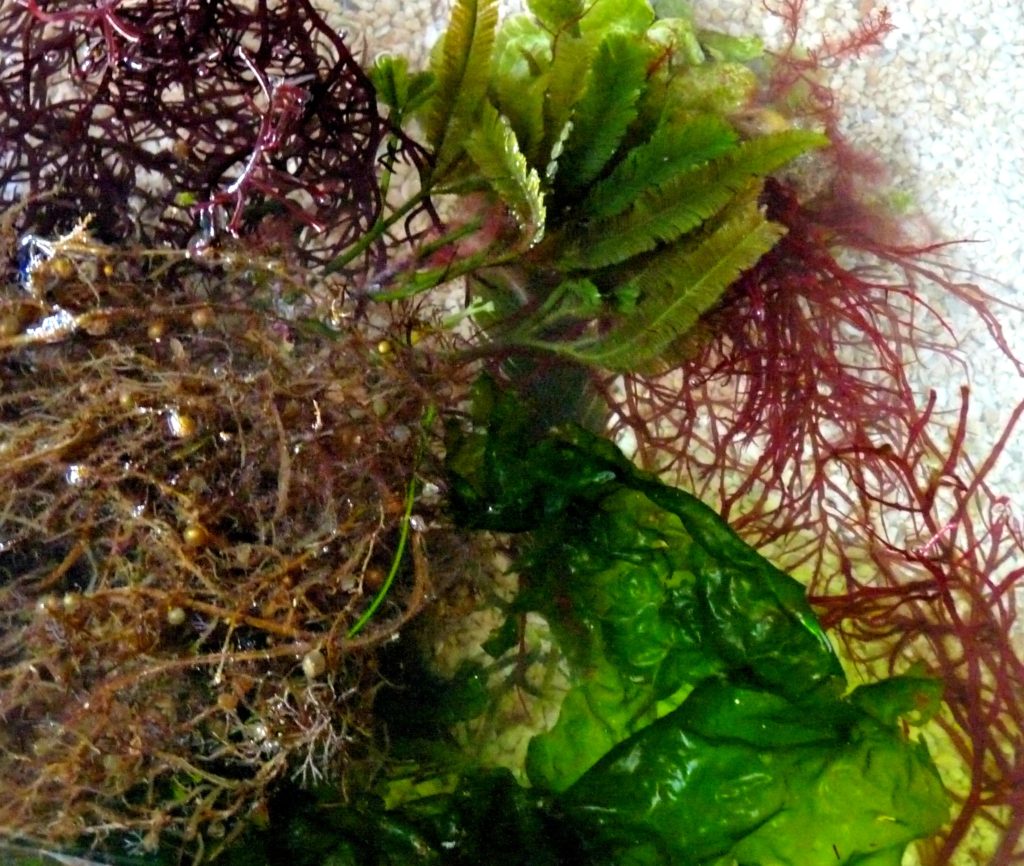
The greatest diversity of fish form and function is found among marine species. Here the flat fishes, flounders, hog chokers, tonguefish, represent the epitomy of depression, and eels are the most elongate. Blowfish inflate themselves, and pipefish, looking like blades of grass, are perfect in camouflage. While these examples are likely to turn up in our fish assortment, there is no predicting the diversity and variety that will be provided. It is always a pleasant surprise.
$135.00 – $216.50
Includes non-vertebrate chordates: solitary, colonial, and encrusting tunicates and amphioxus
$135.00 – $191.00
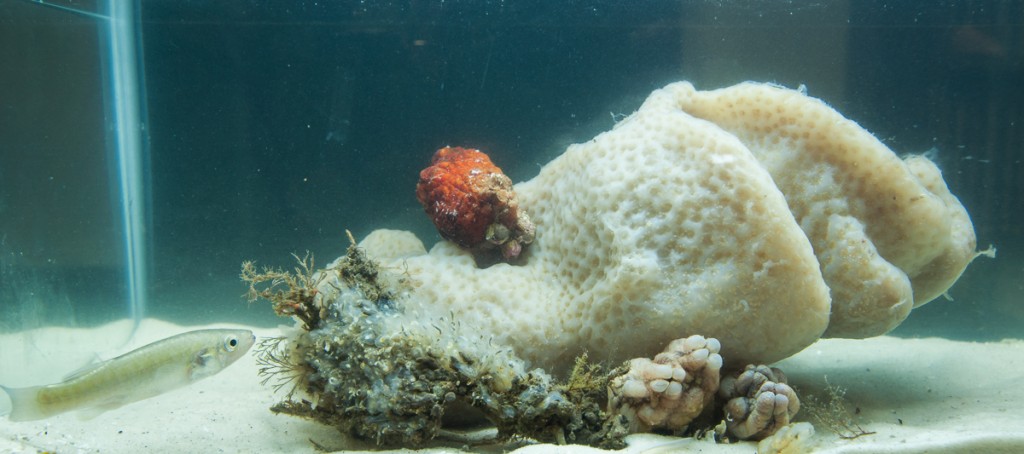
Colorful anemones from our tanks, hydroid, corals, gorgonians, sea pansies and if scyphozoan jellyfish are pulsating in our bay, they are included along with shimmering examples of the phylum Ctenophora.
$135.00 – $270.00
Arius felis
They are a sleek saltwater catfish that cleans up the bottom. Adult males carry and hatch the eggs in their mouths. Size 10-30 cm.
Each Dozzen small ---123
Each Dozzen small ---123
Each Dozzen small ---123
Each Dozzen small ---123
$22.50
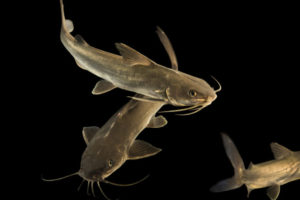
Hardhead sea catfish (Arius felis)
Spheroides nephelus
A drab smooth-skinned fish that will inflate itself into a tight, buoyant, impregnable ball when handled. Size: 10-14 cm.
$25.50
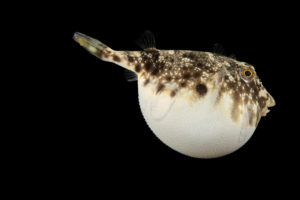
Southern puffer (Spheroides nephelus)
Lactophrys tricornis
It has a fused armor giving it a hard-shelled, triangular un-fishlike body. Colorful blue, green and yellow fish with two prominent horns over its eyes.
$25.50
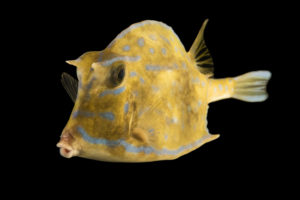
A cowfish (Lactophrys tricornis)
Balistes capriscus
Known mostly for their sharp “triggered” dorsal spine, these territorial grey triggerfish are a sight to see both locally in the Gulf of Mexico and ranging throughout the western Atlantic Ocean.
$80.50
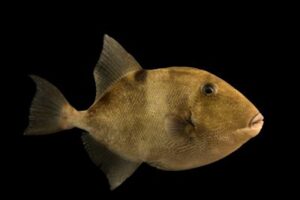
Grey triggerfish (Balistes capriscus) at Gulf Specimen Marine Lab and Aquarium.
Monacanthus hispidus
Their names come from their sandpapery skin, fishermen once used their hides to strike matches. Their dorsal spine has a trigger-like mechanism that makes it spring erect when they are threatened. Size: 4-8 cm.
$13.00 – $17.00
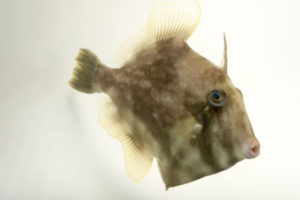
Gobiesox strumosus
Small fish shaped like a skillet; with a broad head and narrow body. The pelvic fins are actually a large, broad suction disc. Clingfish are usually found hiding in or on the shells around oyster bars and seagrass beds. Size: 4-6 cm.
$24.50
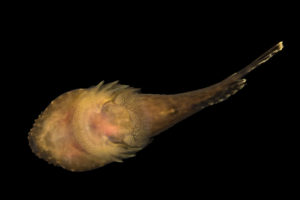
Clingfish or skilletfish (Gobiesox strumosus)
Symphurus plagiusa
Small, flat, left-eyed fishes that taper to a point — “tongue-shaped” — hence the name. They are bottom-dwelling fish, common in the muddy bottoms of bays and estuaries feeding on small crustaceans and polychaete worms. Size 6-12 cm.
$20.00

Trinectes maculatus
This flatfish stays buried and looks like a baby flounder but seldom grows larger than six inches. Probably named from the days when hogs roamed the beaches and gobbled up fish as fast as seine fishermen dragged their catches up on the beaches. The scales, which make the fish stick to the deck, also could lodge in a hog’s throat. Very hardy and vigorous. Size: 6-12 cm.
$22.50
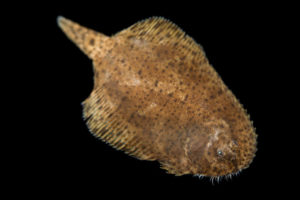
Hogchoker (Trinectes maculatus)
Paralichthys oblongus
Unlike the common gulf flounders, these flatfishes have four large, dark and round spots on their bodies.
$22.50
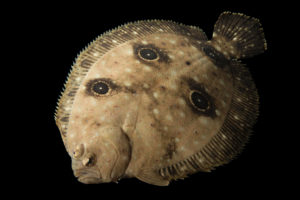
Four-spotted flounder (Paralichthys oblongus)
Paralichthys albigutta
Flounders belong to the group of fishes known as “flat fishes.” Their most unique feature is the placement of their eyes. As the young larvae develop, one eye migrates across the head toward the other. Depending on the species, flounders and other flatfishes are “right-eyed” or “left-eyed.” Lying flat on the sea bottom, flounders are masters of camouflage, changing their coloration to blend in with the substrate; hiding from predators or aggressively ambushing small fishes and crustaceans with their mighty tooth-studded jaws.
$21.50 – $34.50
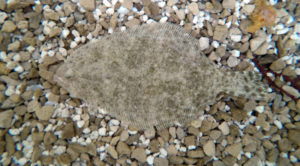
Mugil cephalus.
Often seen jumping out of the water, mullet are the cows of the fish world, and are the main food fish of the northern Gulf Coast. They browse along the bottom, feeding on algae and tiny creatures that live in mud.
$22.50
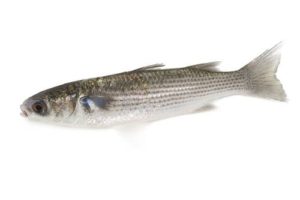
Serranus subligarius
The smallest of the Sea Basses they are 5 inches long at maximum, but mature at 2 inches. Common in warm Atlantic and Caribbean waters to depths of 60 feet. Found around rocky jetties and over sand flats. Their common name comes from the large white patch on their belly. Size: 3-6 cm.
$31.50
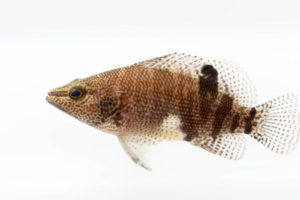
Belted sandfish (Serranus subligarius)
Chasmodes saburrae and other species
A large group of
small, fish (2-4 inches), common along the shells of oyster bars. Also found on shallow flats and seagrass beds. Females lay hundreds of tiny golden colored eggs in empty shells, which the males aggressively guard. Size: 3-8 cm.
$17.00
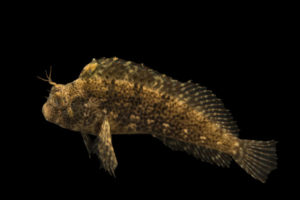
Feather blennie (Hypsoblennius henzi)
Halichoeres bivittatus
Has beautiful green coloration. Will bury itself in the sand substrate to hide. Size 6-10cm.
$17.50
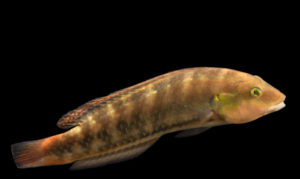
Green wrasse (Halichoeres bivittatus) at Gulf Specimen Marine Lab in Panacea, FL.
Prionotus scitulus, P. tribulus
Swims along the sand bottoms with its wing-like pectoral fins expanded. The modified ventral fins act like fingers, feeling the bottom for prey. Size: 6-12 cm.
$25.50
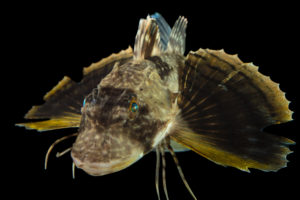
Bighead searobin (Prionotus tribulus)
Scorpaena brasiliensis
Red, orange, and brown, they blend into the sea bottom, and ambush passing shrimp. Although bristling with poisonous spines, they are a popular aquarium specimen.
$29.00
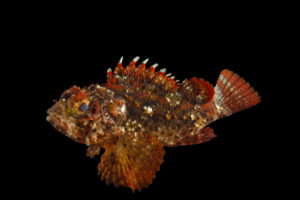
A scorpionfish (Scorpaena brasiliensis)
Chaetodipterus faber
Common to Florida and Caribbean water, schools of spadefish are frequently seen nibbling on jellyfish, hydroids, and feeding on small crabs and shrimp when the fish matures.
$45.00 – $56.50
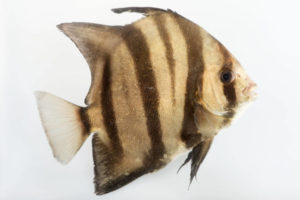
Atlantic spadefish (Chaetodipterus faber)
Diplodus holbrookii
Less common than the regular pinfish but still very common. Found in coastal grass beds. Size 6 to 12 cm
$14.00

Lagodon rhomboides
3 inches to 6 inches, a very common aggressive fish available throughout the year. Hardy species that does well in aquariums.
$14.00

Lagodon rhomboides
This colorful banded brittlestar lives in sponges and tunicates, rhythmically waving its arms in the current. Feeding can be easily observed since the disc is soft and shows peristaltic movements. Some may exhibit luminescence. Ophiothrix has long spines covering its arms, giving it a hairy appearance. It has tremendous variation in color patterns. Size: 2-3 cm.
$6.50 – $34.00
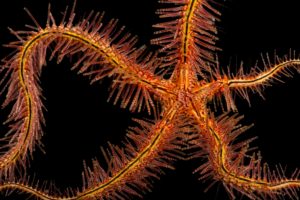
This living “spanish moss” of starfish is found in deep water attached to sponges and rocks. At night it expands its net of tentacles to catch plankton in the water. They come in a great array of colors ranging from reds, oranges, white and black.
$35.50
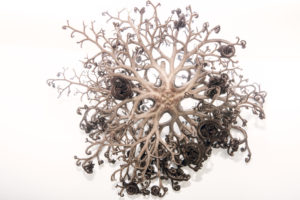
A practically indestructible mud-burrowing, thick-skinned holothurian that lives in a U-shaped burrow. Its bright red blood is a source of invertebrate hemoglobin. Recommended as a good laboratory dissection specimen. Doesn’t eviscerate. Size: 10-12 cm.
$19.50

A small, brown holothurian which clings to rocks and seaweed with unusually large, highly modified tube feet. An abundance of ossicles in the body wall makes it stiffer than most other sea cucumbers. In the aquarium it will climb the glass to the water level at night. Periodically its crown of feathery black tentacles will emerge from the anterior end. Pentacta will not eviscerate when handled. Size: 4-6 cm.
$18.50
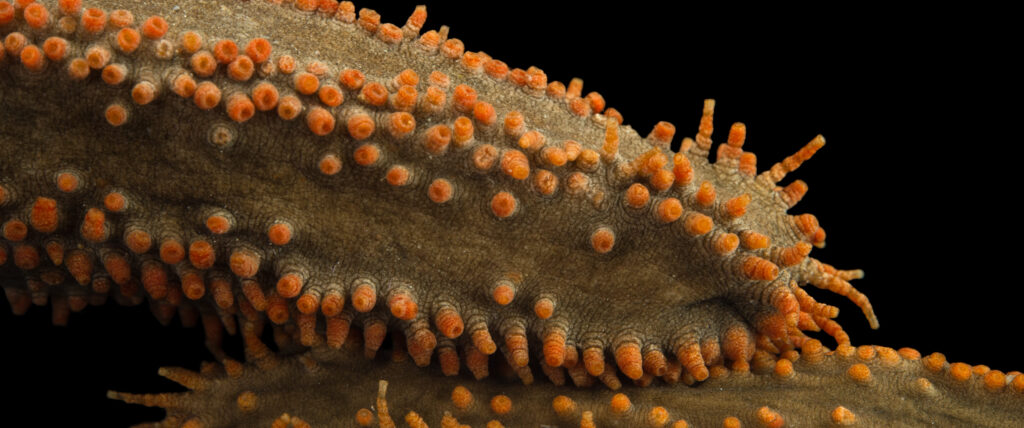
Occurs abundantly from Maine to Texas, and has been traditionally used for dissection and study. When contracted, it turns into a tight round turgid ball. Normally, they lie buried, with only their flowery crowns rising above the sand.
$25.50
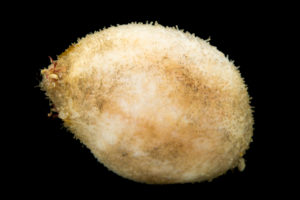

Grows to be the largest of all cucumbers in the Gulf of Mexico. This, and other large species, are dried and eaten in oriental countries. Lives in mud flats in deeper water offshore. Size: 12-18 cm.
$32.00
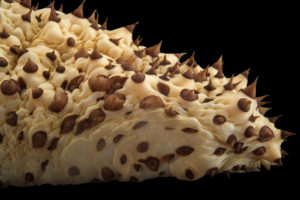
Reaches a maximum length of 10 inches. The slender and cylindrical body gently tapers. Coloration is highly variable. Found in turtle grass beds and sand bottoms.
$32.00
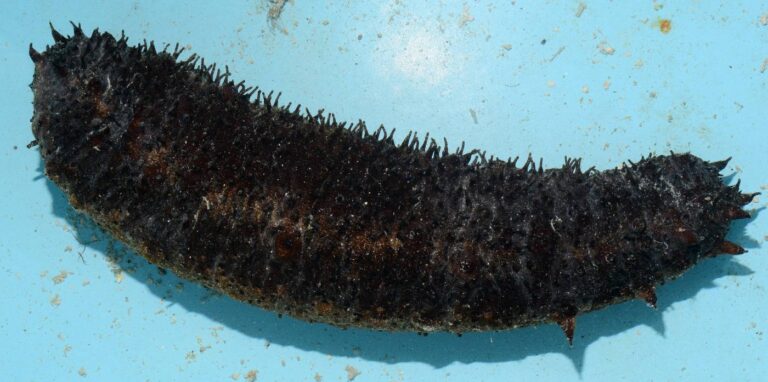
A red blooded fat unsegmented worm-like creature with a white grooved introvert that is part of its own obscure phylum, and gets its species name Mellita from living in dead sand dollars. Sporadically available, occasionally we find them boring into rock. Size 1/4-1 inch long.
$28.00
Has a venomous spine on its lashing tail that can cause a wound and painful swelling that takes months to heal. The sting ray also possesses high concentrations of uric acid in its body tissues and blood. Readily available at almost any time of the year. Size: 18-30 cm.
$93.50

